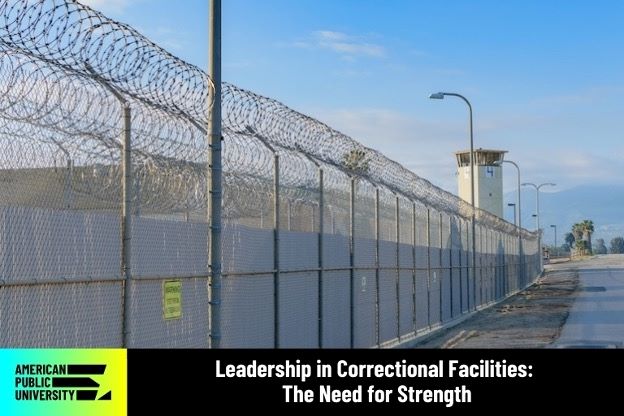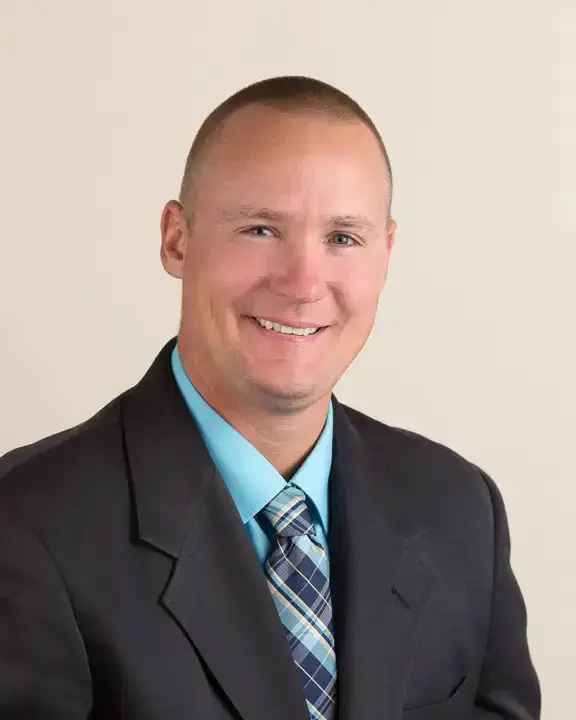By Dr. Jarrod Sadulski | 09/23/2024

Leadership in correctional facilities presents unique challenges, compared to other forms of leadership and management. In addition to being responsible for subordinates who are corrections officers, supervisors are responsible for the care and treatment of inmates.
An effective correctional leader must navigate these responsibilities while maintaining the safety and security of a prison. Often, leaders must use transformational leadership to inspire and motivate their subordinates.
Problems That Correctional Leaders in Prison Facilities Need to Address
According to the National Institute of Justice, some of the most pressing issues with correctional officers that need to be addressed by prison leadership include:
- Improving staff competencies within the correctional system with a focus on professionalism
- Improving staff training, including enhancing leadership development and professional development programs
- Improving the corrections work environment and conditions for subordinates
- Helping officers acquire leadership skills through leadership development programs like the warden exchange program
- Addressing the workforce staffing crisis that adversely impacts many prisons
Corrections Supervisors Should Ensure Their Correctional Officers Are Properly Trained
Corrections supervisors have an essential role in ensuring that their subordinates obtain frequent training. Training is important in ensuring that corrections officers have the knowledge to do their jobs on a daily basis. Proper training by effective leadership can also reduce liability issues and inmate problems within prisons.
For instance, proper training can help to ensure that corrections officers who interact with inmates understand prison policies. Leaders can also teach their subordinates how to respond to dynamic and dangerous situations – such as riots or prison escapes – that could potentially impact public safety. Corrections professionals should also know how to properly use the tools and weapons that are common within prisons to gain compliance from a resisting inmate.
Correctional leaders should also recognize when subordinates struggle with a certain aspect of a prison job and provide additional training if needed. This leadership style is key to developing a skilled and confident team.
Staffing shortages, the safety hazards of maintaining order and dealing with non-compliant inmates, the risk of exposure to disease, and shift work are all stressful challenges for corrections officers. As a result, their well-being is adversely affected.
However, Dr. Michael Pittaro, my colleague and a leading expert on current issues and trends in corrections, posits that physical safety is not the leading cause of stress among correctional staff members. Instead, Dr. Pittaro notes that the main cause of corrections-related stress is inadequate and weak leaders. Strong correctional practices and effective leadership are essential in mitigating stress for corrections officers.
Leadership Determines the Internal Culture of Correctional Facilities
A good leader determines the internal culture within the prison for staff and inmates. A positive culture created by effective leaders and other administrators will help to guide the morale, ethics, professionalism, and job satisfaction of prison guards.
Mid-level supervisors have an especially important role in corrections. They can either inspire their subordinates by gaining their commitment to the prison's objectives and daily operational goals, or they can create an us-versus-them mentality between corrections officers and upper-level leaders.
A division between subordinate corrections officers and mid-level leaders creates an atmosphere of mistrust and has an adverse impact on workplace morale. But when good mid-level supervisors lead by example in following prison policies, hold themselves accountable to the same standards that they require of their subordinates, and stand up for officers when their actions were ethical and within policy, they will be better able to gain the trust of others.
Instead of simply ordering subordinates to follow directions and advising them not to ask questions, an effective leader explains why an order is in place and how it applies to achieving a work-related goal. This work requires a considerable amount of self-awareness from a leader.
Trust and effective communication are essential in this situation. This trust and communication create a culture where subordinates have confidence in expressing their thoughts to a leader. They also know that they have support and management has their best interests in mind.
The ability for mid-level supervisors to advocate to top prison administrators is equally important and can further develop this feeling of trust. Discussions between mid-level leaders and top-level prison administrators can include a wide range of topics, such as:
- Improving work conditions
- Fixing broken policies
- Advocating for incentives for corrections officers
Avoiding the Burnout of Corrections Officers
Working in corrections can be tough. Strong leaders should develop best-practice strategies to help their subordinates avoid burnout. These strategies can lower employee turnover within prisons and enable the most promising employees to be promoted through the ranks, rather than resigning and moving to different careers.
Some best practice strategies for a leader include fostering communication, decision making, and problem-solving skills by subordinates. It is also helpful to rotate subordinate corrections officers through different roles within a prison, provide career development opportunities, and monitor employees for any indicators of stress.
A well-run correctional facility can also make a difference to inmates. In some prisons, inmates can be taught useful job skills that can be helpful in providing opportunities when they return to society. These vocational education efforts can also lower the recidivism rates of former inmates.
In the Corrections Field, Visionary Leadership Is Required
The National Institute of Corrections says that to improve correctional policies and outcomes, visionary leaders are required. Visionary leaders find new ways to solve problems, provide new solutions to upper management, offer guidance as needed, and align subordinate strengths with job responsibilities within the corrections setting.
Developing strong leadership skills through experience and training is vital in any profession. Programs such as the warden exchange program and initiatives by the national director are critical in ensuring leadership development within the corrections field.
Criminal Justice Degrees at American Public University
American Public University (APU) offers four criminal justice degrees that are designed to cater to students’ needs, whether those students are just entering a field or are mid-level professionals seeking to upskill their abilities. These degrees are:
- An online associate of arts in criminal justice
- An online bachelor of arts in criminal justice
- An online bachelor of science in criminal justice
- An online master of arts in criminal justice
Each program is structured to provide students with useful knowledge and skills. In addition, APU’s convenient online learning environment accommodates students’ busy schedules and professional commitments.
Online Associate of Arts in Criminal Justice
The online associate of arts in criminal justice is intended to offer a foundational understanding of the criminal justice system, covering essential topics like criminology and juvenile delinquency. This program features courses like “Introduction to Law Enforcement,” “Criminal Justice Administration,” and “Intercultural Communication” to help students grasp the basics and spark interest in crime prevention and rehabilitation.
Online Bachelor of Arts in Criminal Justice
The online bachelor of arts in criminal justice is designed for students interested in studying crime’s social and behavioral aspects. This degree covers topics such as criminology, criminal law, and ethics in criminal justice.
Online Bachelor of Science in Criminal Justice
The online bachelor of science in criminal justice uses a more scientific approach to classes, focusing on the analytical and technical aspects of criminal justice. Courses in this program cover topics such as criminology, criminal profiling, crime analysis, criminalistics, and criminal investigation.
Online Master of Arts in Criminal Justice
The online master of arts in criminal justice is suited for professionals seeking leadership or teaching roles in criminal justice. This degree covers advanced topics like police administration, research design and methods, criminology, and criminal justice ethics.
For more information about APU’s criminal justice degrees, visit our program page.
Note: These programs are not designed to meet the educational requirements for professional licensure or certification in any state. These programs have not been approved by any state professional licensing body and do not lead to any state-issued professional license.

Dr. Jarrod Sadulski is an associate professor in the School of Security and Global Studies and has over two decades in the field of criminal justice. He holds a bachelor’s degree Criminal Justice from Thomas Edison State College, a master’s degree in criminal justice from American Military University, and a Ph.D. in criminal justice from Northcentral University.
His expertise includes training on countering human trafficking, maritime security, mitigating organized crime, and narcotics trafficking trends in Latin America. Jarrod has also testified to both the U.S. Congress and U.S. Senate on human trafficking and child exploitation. He has been recognized by the U.S. Senate as an expert in human trafficking.
Jarrod frequently conducts in-country research and consultant work in Central and South America on human trafficking and current trends in narcotics trafficking. Also, he has a background in business development.
